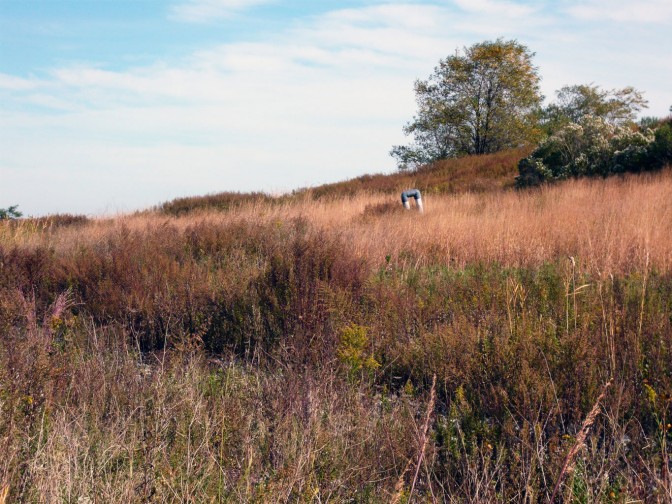What Brings Photographers Back to Freshkills Park

Since 2014, photographers have been documenting Freshkills Park’s changing landscape for an ongoing series called Capturing Change. The series aims to generate a community- and artist-driven archive of the site’s transition from landfill to public space. Several photographers have returned multiple times, compelled to explore the park over and over again.
Many of the photographers have memories of visiting or living nearby the Fresh Kills Landfill. “As a boy I watched the heavy machinery push at the fresh piles that were constantly being delivered,” photographer Sean Sweeney said. As an adult, he became Chairman of Staten Island’s Community Board 1. “I had the opportunity to be involved with some of the plans to close the landfill and make it into a place to be proud of.”
Photographer Michael McWeeney also grew up in Staten Island. “I can remember the stench of the landfill on hot days, the flocks of sea gulls circling the dump for the day’s fresh delivery of trash from the 5 boroughs of New York and the stigma of living so close to the world’s largest landfill,” he said. When he began working for the local papers in 1990 he found himself in the landfill working on stories related to waste management and the eventual closing of Fresh Kills.
Artist Andrea Callard first visited the Fresh Kills Landfill in the 1970s. “An individual could drive into a specified area of Freshkills on a Saturday and dump ‘household bulk,’ objects we no longer needed,” she explained. “I somehow heard about this and drove from Tribeca with a friend.” This was the first of many visits to the site that continue today with photography tours.

These photographers also recognize the beauty and significance of the opportunity photography tours at Freshkills Park provide. “Having the opportunity to photograph the park’s hills is quite a unique experience in New York City,” McWeeney said. “You feel as if you are somewhere else, somewhere far away from the traffic and the malls and the bustling crowds of people. You still see the refinery of New Jersey and the Manhattan skyline, but you are separated from it.”
For Callard, it’s a deep pleasure to document what keeps changing and what everyone is not able to see. “Freshkills is a strange yet lovely place to walk and contemplate where one is and where one is going,” she said. “I really appreciate how the color of the landscape shifts so much and my own looking changes and becomes more subtle.”
Sweeney believes that Capturing Change is providing an important service by letting photographers of all levels document the landfill-to-park transformation. “From the iPhone shots to the massive megapixel grabbers, we all belong,” he said. “I always say the world needs a documentarian. No two mornings, days or evenings are the same at The Dump, The Landfill, The Park. The sun rises and sets differently every day.”
To learn about upcoming photography tour dates, visit www.freshkillspark.org/calendar.




